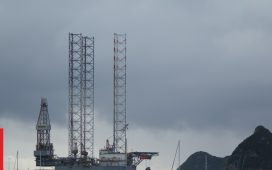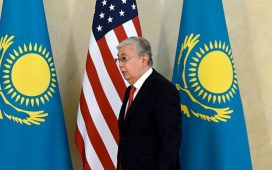[ad_1]
US priorities highlighted by Pompeo’s pre-election Asia trip

The eyes of much of the world are on US domestic politics ahead of Tuesday’s presidential election. However, critical foreign policy decisions continue to be made. Secretary of State Mike Pompeo and Defense Secretary Mark Esper were in New Delhi on Tuesday for a key summit between the world’s two largest democracies.
The Trump administration will not have been displeased with the timing of the trip, given the multimillion-strong Indian-American voter base in the US. However, this was a substantive international affairs meeting with key deals to be signed. Pompeo and Esper were hosted by their counterparts, Defense Minister Rajnath Singh and External Affairs Minister S. Jaishankar, for the third annual 2+2 ministerial dialogue. A range of agreements were made, including giving India access to sensitive US satellite data to help improve the targeting of missiles and drones, while the American side also met with Indian Prime Minister Narendra Modi.
Coming immediately before the election, the meeting was a powerful assertion of US diplomatic priorities. It also sent a signal to others, especially China, which this week hosts the fifth plenary session of the 19th Central Committee of the Chinese Communist Party to formulate the 14th Five-Year Plan (2021-2025) for economic and social development. The trip will be particularly unwelcome for Beijing given that Washington last week approved the potential sale of three weapons systems to Taiwan, including sensors, missiles and artillery that could have a total value of $1.8 billion.
The US team is also this week visiting Sri Lanka, the Maldives and Indonesia. Jakarta is locked in territorial disputes with Beijing in the South China Sea, while the other two nations are struggling with Chinese debt incurred with the financing of big infrastructure projects.
However, the India leg was the top priority. In part, this is because of Washington’s perception of New Delhi’s role as a growing regional counterweight to Beijing. Earlier this month, Pompeo met Jaishankar in Tokyo, along with their Japanese and Australian counterparts. This “quad” will next month carry out its largest naval wargames in years. New Delhi’s decision to expand the exercises this year comes as it is locked in a military standoff on the disputed land border with China.
There are some irritants in the Washington-New Delhi relationship, including US threats to levy sanctions if India continues to buy Russian military equipment. Nevertheless, the bilateral relationship has improved significantly since the end of the Cold War, and on a broadly bipartisan basis.
Both sides have incentives to deepen ties, building on moves in recent years. In 2016, Washington declared New Delhi a major US defense partner. Following that, Pompeo helped finalize a Communications Compatibility and Security Agreement, underpinning greater counterterrorism and defense cooperation, which then-Defense Minister Nirmala Sitharaman claimed elevated bilateral relations “to unprecedented heights.”
Beyond security, the two sides are aiming to agree a bilateral trade deal, which Donald Trump pushed in his February visit as he became only the seventh US president to travel to India. The US is New Delhi’s second-largest trading partner after China and trade in goods and services was a record $142.6 billion in 2018, up from $11.2 billion in 1995.
The India leg was key, partly because of Washington’s perception of New Delhi’s role as a counterweight to China.
Andrew Hammond
Pompeo hopes this week’s successful India trip will help bring greater credibility to the White House’s regional strategy. This has been criticized in some quarters for a perceived lack of ambition vis-a-vis China, with its $1 trillion Belt and Road Initiative, which has proved so attractive to countries such as Sri Lanka. Pompeo this week became the first US secretary of state to visit Colombo in a decade.
Welcome as the latest US trip is for many regional allies, a significant number are keeping their cards close to their chests until after next week’s presidential election. The result of the election could decide whether Washington will seek to join the Comprehensive and Progressive Trans-Pacific Partnership (CPTPP). This would be warmly welcomed by several regional allies, given the growing sense that more is needed to countervail China’s monumental ambition, as illustrated by the BRI and Beijing’s alternative vision to the CPTPP: The Free Trade Area of the Asia Pacific and the Regional Comprehensive Economic Partnership.
History also points to the need for a grand US plan for what Pompeo has called “the most competitive part of the world for years to come.” Since 1945, US administrations of both Republican and Democratic stripes have helped create and nurture key global and regional bodies and institutions that exist to this day, from the UN to the International Monetary Fund and the World Bank, helping to embed American influence. Inspired by this postwar success, both the administrations of George H.W. Bush and especially Bill Clinton sought to respond to the collapse of Soviet communism by encouraging the creation of a range of institutions, including the Asia-Pacific Economic Cooperation. In this context, many US regional allies would now like to see Washington think big again — CPTPP and beyond — to embed its influence and encourage the growth of democracy and open markets at a time of increasing geopolitical flux.
- Andrew Hammond is an Associate at LSE IDEAS at the London School of Economics.
Disclaimer: Views expressed by writers in this section are their own and do not necessarily reflect Arab News’ point-of-view
[ad_2]
READ SOURCE









